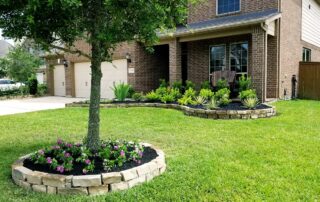How Thick Should Mulch Be in Flower Beds?
Mulch can be a great method of protecting your flowers. However, how much mulch is required for flower beds? Mulch ought to be two to four inches thick. Any less will not provide enough protection. If the soil is too low, it may prevent water from getting to the roots.
Clippings of grass
If you're looking to make your flower beds look lush, you can make use of grass clippings for mulch. They're cheap and more environmentally friendly than straw. They also provide water and insulation for your plants, helping to reduce transpiration. It is also possible to add nutrients to your soil by using grass clippings that are a great source of nitrogen. They are able to be used for mulching flower beds up to two inches thick.
Grass clippings contain one to two percent nitrogen, 0.3% phosphorus, 1.3 percent to 2.3 percent potassium, as well as trace elements. Clippings of grass can be used as fertilizers. You can use the clippings to create a variety of landscaping projects, including flowers, gardens, and lawns.
Composting grass clippings into flower beds is a better choice instead of raking them into the soil. The clippings are more nutritious and break down faster when composted.
Leaves
Leaf mulch is a great way for adding nutrients to soil. It provides soil microbes with an ongoing supply of nutrients and a balanced mix of carbon and nitrogen. Alongside adding nutrients to the soil, shredded leaves may be used as a natural pest control by preventing weeds from growing as well as keeping the soil humid.
It's simple and inexpensive to use leaves for mulch. It is important to first cut the leaves into pieces. This will make the mulch more effective and attractive. This helps prevent the soil from turning damp by preventing the growth of mats. In addition, shredded leaves will break down more quickly.
Although whole leaves can be appealing, issues with infiltration could occur. They can also form an encasement that blocks water from reaching the soil, if not broken. They can also contribute to acidity, and can contain substances that can be harmful to various plants.
Pine needles
The pine needle mulch is a great way to add mulch to flower beds. This mulch will not only suppress weeds but will also increase soil porosity and provide nutrients to your soil. In addition, it's very easy to rake up. It's important to have an area of pine needle mulch at least two to three inches thick. Mulch that's thick will stop weeds growing through it.
Another reason for using pine needle mulch in the flower beds of your garden is for overwinter protection. It is recommended to spread the mulch a few inches around the base of the plants to shield the roots. You can also spread pine needles up to five inches thick over trunks or trees.
Pine needles are a great option for flower beds due to the fact that they don't compress the soil. They take a long time to break down and hinder the development of the seeds of weeds. The pine needle mulch doesn't need to be replaced each year. They're also lighter than other mulches, making them easier for gardeners.
Compost
It's an excellent soil amendment. You can add it either in the spring or in the fall. It can enrich your soil and will help your plants grow more effectively. It is recommended to apply compost up to 12 inches deep. The soil must be moist before adding compost. You can check the level of moisture in the soil by pressing it. If it is able to squeeze out the water, then it's damp.
The most effective compost is completely decomposed. It is dark brown, crumbly and has an earthy smell. It is able to enhance soil structure by eliminating the soil that is heavy and adding body or texture to soils with less. It will also provide nutrients that will boost the growth of all plants including flowers. It will take at most three months to break down and at a maximum of three years. It is not recommended to make use of compost that hasn't been completely decomposed in flower beds.
Compost is a great soil amendment that can be applied at any time of the year, however it is usually applied in spring or autumn after the garden has been cleaned. Between a half-inch and an inch of compost is a good addition to flower beds as well as other areas of the garden. Distribute it evenly over the base of the plants and in between the rows, at least 2 inches apart. You should add compost to your flower beds at least twice each year. The benefits will be visible in the coming years.
https://www.thedetailguysmd.com/deck-builders-bel-air-md/
https://www.thedetailguysmd.com/hardscaping-bel-air-md/
https://www.thedetailguysmd.com/landscaping-and-hardscaping-near-me-maryland/
https://www.thedetailguysmd.com/how-to-install-river-rock-landscaping/
https://www.thedetailguysmd.com/landscaping-harford-county-md/

